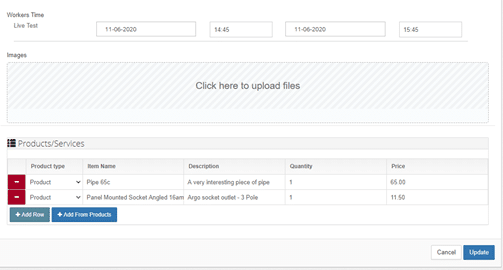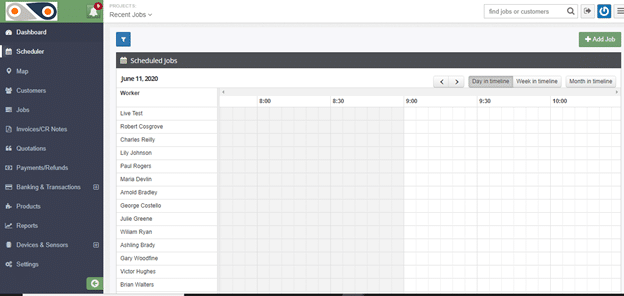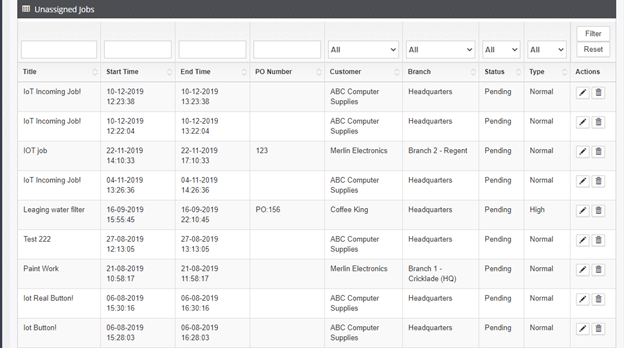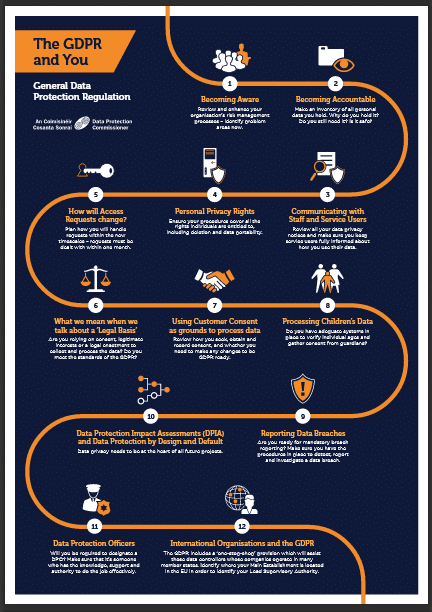Regular maintenance is needed to keep the equipment in your facility operating normally. All machinery has a design lifespan, and your goal is to extend this as long as possible, while maintaining optimal production levels. How you go about the maintenance matters, from routine checks to repairing the damaged component parts?all before the whole unit needs to be tossed away and a new one purchased and installed. Here, we will break down the different approaches used, and show you why more industries and businesses are turning to proactive maintenance modes as opposed to the traditional reactive approaches for their?field service operations.?
Reactive Maintenance: A wait and see game
Here, you basically wait for a problem to occur, then fix it. It’s also commonly referred to as a “Run-to-Failure” approach, where you operate the machines and systems until they break. Repairs are then carried out, restoring it to operational condition.?
At face value, it appears cost-effective, but the reality on the ground is far much different. Sure, when the equipment is new, you can expect minimal cases of maintenance. During this time, there?ll be money saved. However, as time progresses there?ll be increased wear, making reliance on a reactive maintenance approach a costly endeavour. The breakdowns are more frequent, and inconsistent as well. Unplanned expenses increase operational costs, and there will be lost productivity during the periods in which the affected machinery won’t be in operation.?
While reactive maintenance makes sense when you’re changing a faulty light bulb at home, things are more complicated when it comes to dealing with machinery in industries, or for those managing multiple residential and commercial properties. For the light bulb, it’s easier to replace it, and failure doesn’t have a ripple effect on the rest of the structures in the household. For industries, each time there is equipment failure, you end up with downtime, production can grind to a halt, and there will be increased environmental risks during equipment start-up and shutdown. If spare parts are not readily available, there will be logistical hurdles as you rush the shipping to get the component parts to the facility. Add this to overworked clients in a bit to complete the repair and to make up for lost hours and delayed customer orders.
For field service companies, more time ends up being spent. After all, there?s the need of knowing which parts needed to be attended to, where they are, and when the servicing is required. Even when you have a planned-out schedule, emergency repairs that are required will force you to immediately make changes. These ramps up the cots, affecting your operations and leading to higher bills for your client. These inconveniences have contributed to the increased reliance on?field service management platforms that leverage on data analytics and IoT to reduce the repair costs, optimise maintenance schedules, and?reduce unnecessary downtimes?for the clients.
Waiting for the machinery to break down actually shortens the lifespan of the unit, leading to more replacements being required. Since the machinery is expected to get damaged much sooner, you also need to have a large inventory of spare parts. What’s more, the damages that result will be likely to necessitate more extensive repairs that would have been needed if the machinery had not been run to failure.?
Pros of reactive maintenance
- Less staff required.
- Less time is spent on preparation.
Cons of reactive maintenance
- Increased downtime during machine failure.
- More overtime is taken up when conducting repairs.
- Increased expenses for purchasing and storing spare parts.?
- Frequent equipment replacement, driving up costs.?
This ?If it ain’t broke, don’t fix it? approach leads to hefty repair and replacement bills. A different maintenance strategy is required to minimise costs. Proactive models come into focus. Before we delve into predictive maintenance, let’s look at the preventive approach.?
Preventive Maintenance: Sticking to a timetable
Here, maintenance tasks are carried out on a planned routine?like how you change your vehicle?s engine oil after hitting a specific number of kilometres. These tasks are planned in intervals, based on specific triggers?like a period of time, or when certain thresholds are recorded by the meters. Lubrication, carrying out filter changes, and the like will result in the equipment operating more efficiently for a longer duration of time. While it doesn’t completely stop catastrophic failures from occurring, it does reduce the number of failures that occur. This translates to capital savings.??
The Middle Ground? Merits And Demerits Of Preventive Maintenance
This periodic checking is a step above the reactive maintenance, given that it increases the lifespan of the asset, and makes it more reliable. It also leads to a reduced downtime, thus positively affecting your company?s productivity. Usually, an 80/20 approach is adopted,?drawing from Pareto’s Principle. This means that by spending 80% of time and effort on planned and preventive maintenance, then reactive maintenance for those unexpected failures that pop up will only occur 20% of the time. Sure, it doesn’t always come to an exact 80/20 ratio, but it does help in directing the maintenance efforts of a company, and reducing the expenses that go into it.?
Note that there will need to be a significant investment?especially of time, in order to plan a preventive maintenance strategy, plus the preparation and delegation of tasks. However, the efforts are more cost effective than waiting for your systems and machinery to fail in order to conduct repairs. In fact, according to the US Dept. of Energy, a company can save between 12-18 % when using a preventive maintenance approach compared to reactive maintenance.
While it is better than the purely reactive approach, there are still drawbacks to this process. For instance, asset failure will still be likely to occur, and there will be the aspect of time and resource wastage when performing unneeded maintenance, especially when technicians have to travel to different sites out in the field. There is also the risk of incidental damage to machine components when the unneeded checks and repairs are being carried out, leading to extra costs being incurred.
We can now up the ante with predictive maintenance. Let’s look at what it has to offer:
Predictive Maintenance: See it before it happens
This builds on preventive maintenance, using data analytics to smooth the process, reduce wastage, and make it more cost effective. Here, the maintenance is conducted by relying on trends observed using data collected from the equipment in question, such as through vibration analysis, energy consumption, oil analysis and thermal imaging. This data is then taken through predictive algorithms that show trends and point out when the equipment will need maintenance. You get to see unhealthy trends like excessive vibration of the equipment, decreasing fuel efficiency, lubrication degradation, and their impact on your production capacities. Before the conditions breach the predetermined parameters of the equipment’s normal operating standards, the affected equipment is repaired or the damaged components replaced.??
Basically, maintenance is scheduled before operational or mechanical conditions demand it. Damage to equipment can be prevented by attending to the affected parts after observing a decrease in performance at the onset?instead of waiting for the damage to be extensive?which would have resulted in system failure. Using?data-driven?field service job management software will help you to automate your work and optimise schedules, informing you about possible future failures.
Sensors used record the condition of the equipment in real time. This information is then analysed, showing the current and future operational capabilities of the equipment. System degradation is detected quickly, and steps can be taken to rectify it before further deterioration occurs. This approach optimises operational efficiency. Firstly, it drastically reduces total equipment failure?coming close to eliminating it, extending the lifespan of the machinery and slashing replacement costs. You can have an orderly timetable for your maintenance sessions, and buy the equipment needed for the repairs. Speaking of which, this approach minimises inventory especially with regards to the spare parts, as you will be able to note the specific units needed beforehand and plan for them, instead of casting a wide net and stockpiling spare parts for repairs that may or may not be required. Repair tasks can be more accurately scheduled, minimising time wasted on unneeded maintenance.??
Preventive vs Predictive Maintenance?
How is predictive different from preventive maintenance? For starters, it bases the need for maintenance on the actual condition of the equipment, instead of a predetermined schedule. Take the oil-change on cars for instance. With the preventive model, the oil may be changed after every 5000?7500 km. Here, this change is necessitated because of the runtime. One doesn’t look at the performance capability and actual condition of the oil. It is simply changed because “it is now time to change it“. However, with the predictive maintenance approach, the car owner would ideally analyse the condition of the oil at regular intervals- looking at aspects like its lubrication properties. They would then determine if they can continue using the same oil, and extend the duration required before the next oil change, like by another 3000 kilometres. Perhaps due to the conditions in which the car had been driven, or environmental concerns, the oil may be required to be changed much sooner in order to protect the component parts with fresh new lubricant. In the long run, the car owner will make savings. The US Dept. of Energy report also shows that you get 8-12% more cost savings with the predictive approach compared to relying on preventive maintenance programs. Certainly, it is already far much more effective compared to the reactive model.?
Pros of Predictive Maintenance
- Increases the asset lifespan.
- Decreases equipment downtime.
- Decreases costs on spare parts and labour.
- Improves worker safety, which has the welcome benefit of increasing employee morale.
- Optimising the operation of the equipment used leads to energy savings.
- Increased plant reliability.
Cons of Predictive Maintenance
- Initial capital costs included in acquiring and setting up diagnostic equipment.
- Investment required in training the employees to effectively use the predictive maintenance technology adopted by the company.
The pros of this approach outweigh the cons.?Independent surveys on industrial average savings?after implementing a predictive maintenance program showed that firms eliminated asset breakdown by 70-75%, boosted production by 20-25%, and reduced maintenance costs by 25-30%. Its ROI was an average of 10 times, making it a worthy investment.






